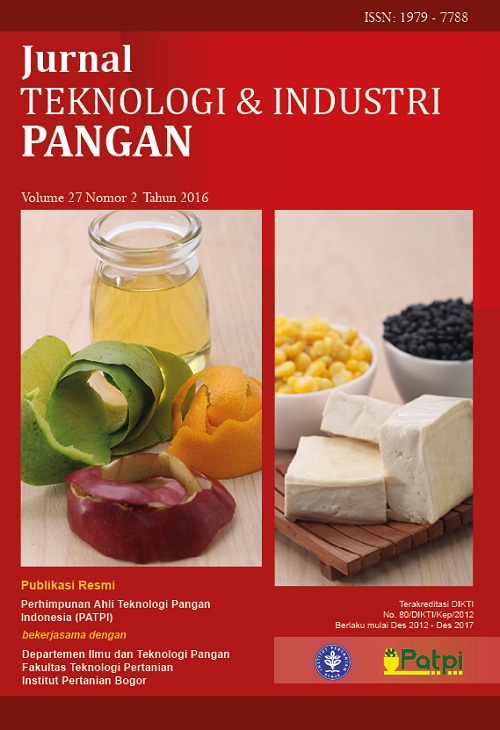Cronobacter sakazakii MEMASUKI KONDISI VIABLE BUT NONCULTURABLE SELAMA PEMBENTUKAN BIOFILM
Abstract
Studies show that nonsporeformer food-borne pathogens may enter a viable but nonculturable (VBNC) state under stress conditions. This research aimed to study the ability of Cronobacter sakazakii to enter a VBNC state during biofilm formation on stainless steel (SS) surfaces and its resuscitability. C. sakazakii YRt2a pGFPuv mutant and wildtype (WT) originally isolated from powder infant formula (PIF) were used in this study. Biofilms were developed on SS surfaces in 1/10 Trypticase Soy Broth (TSB). Culturability of the biofilms was monitored by swabbing and plating the WT or mutant sessile cells onto Trypticase Soy Agar (TSA) or TSA containing 100 μg/mL ampicillin (TSAA), respectively. Meanwhile, their viability was measured using direct microscopic (DMC) count based on green fluorescence for mutant isolates and direct viable count (DVC) for the WT using a fluorescence microscope. Biofilm of C. sakazakii pGFPuv mutant on SS entered VBNC state after 25 days of incubation, while the WT C. sakazakii biofilms was still culturable until day 63. Sodium pyruvate in solid and liquid medium was not able to resuscitate the biofilm cells of C. sakazakii pGFPuv in VBNC state. C. sakazakii pGFPuv mutants enter VBNC state faster than the WT isolates. Depleted nutrient is thought to drive biofilm of C. sakazakii pGFPuv to enter VBNC.

